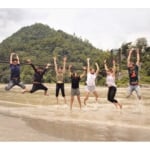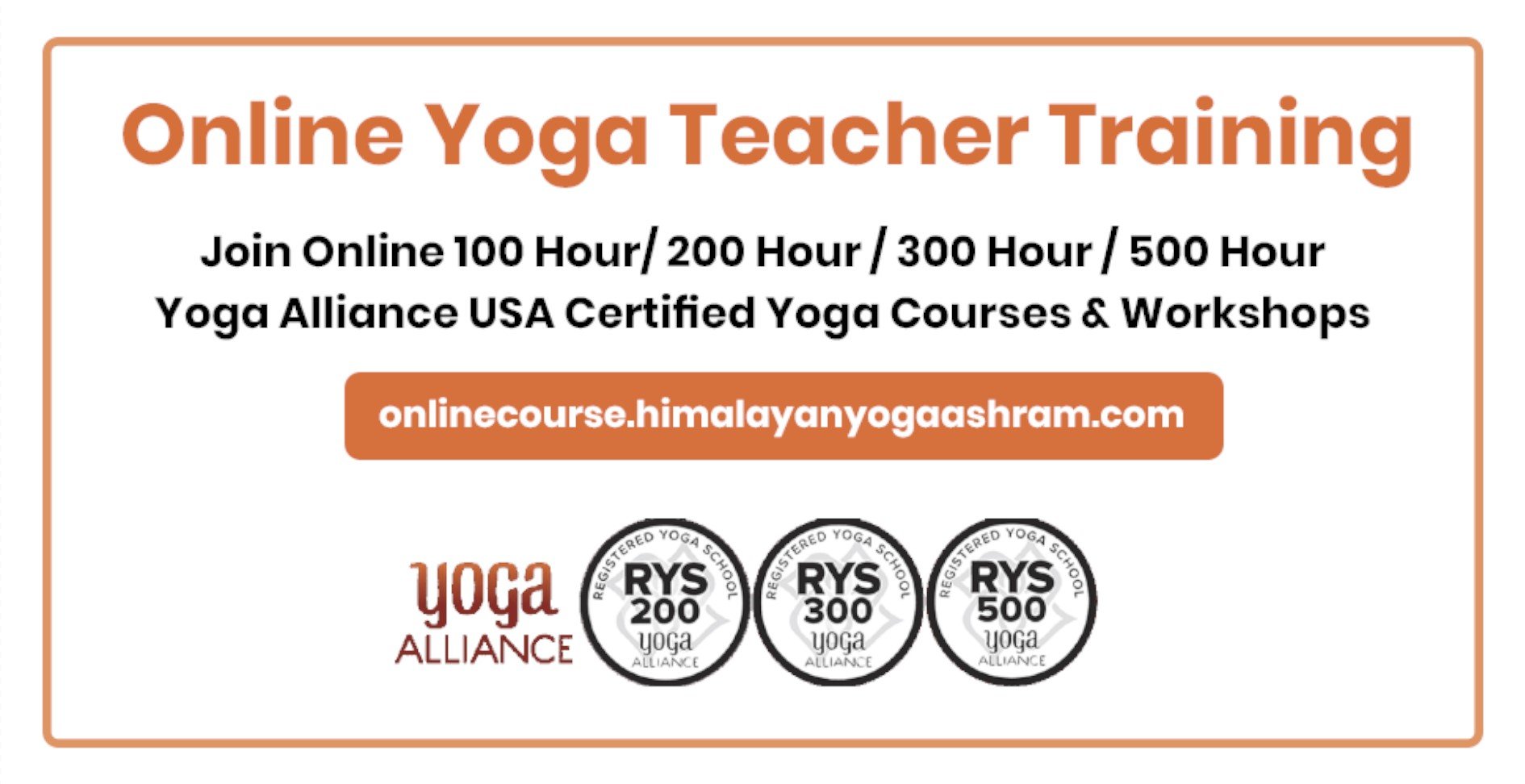10 Shoulder Stretches for getting rid Pain & Tightness
By Himanshu JoshiYogashoulder stretch, shoulder tightnessIf eyes are the mirrors of your soul, shoulders definitely say a lot about your inner confidence and personality. Droopy shoulders often give an impression of a person who is not too sure of himself/herself. It also may send across a message that the person is not interested in having a conversation or is detached.
Many a time due to stress, our body posture may get affected. The muscles around shoulders, neck or back may get strained and prevent us from standing or sitting with confidence. Due to hours of sitting on the desk and not stretching at all over the time makes our muscles weak and prone to wear and tear. Many health conditions like tendonitis, frozen shoulder or injuries may occur if the muscles of the shoulders are left ignored and not taken proper care of.
Our shoulders may be losing their flexibility over the time due to stress taking a toll on them. As work routine gets hectic by the day and responsibilities pile up, our shoulders unknowingly bear the brunt of all the stress that builds up and makes them stiff and prone to many kinds of pains, injuries, neck pain, tension headaches etc.
There can be many reasons for your stiff shoulders. Some of them are:
- Stress: Stress makes your muscles tight. One may also forget to breathe correctly when under some duress. The body posture is also affected by stress. When you are not able to relax your muscles including those around your shoulders, you may experience tightness around the area. It is important to practice stretches everyday that help you remove stiffness from your shoulders.
- Bad posture: When one is not keeping the back and the shoulders straight the muscles around it get stiff. Also if you are using the screen for a longer period of time and your laptop or computer is not kept at a proper angle, your neck or shoulder may get strained and get stiff. Talking on mobile phones all the time, keeping you neck slightly bent also affects the muscles around the neck and shoulder area.
- Incorrect sleeping position: Sometimes we do not pay attention to how we are sleeping and over the time the incorrect sleeping position turns problematic and cause the muscles to strain or ache. It is important to keep your body alignment right even during sleeping.
Our shoulders are body’s most flexible joins and they have the widest range of motion. They allow our arms to move in almost any kind of motion thanks to the dozens of muscles, ligaments and tendons that support these movements.
There are three major bones in the shoulder—the collarbone (clavicle), the shoulder blade (scapula) and the upper arm bone (humerus) and about eight muscles attach to these bones apart from other muscles that support and stabilize the shoulders in its movements. While our shoulders are quite flexible they are also prone to injury, sprains and pains. There are more chances for you to suffer a muscle injury than a bone injury around the shoulder area.
Then there are other important structures of the shoulders that support them and protect them. A rotator cuff is a group of muscles and tendons that support shoulders and gives it a wide range of motion. The Bursa is a sac of fluid that protects tendons of rotator cuff and a cuff of cartilage called the labrum forms a cup for head of the humerus.
Quick Tips to Remain Physically Active in a Desk Job
Many of us spend 8-10 hours working a desk as our muscles are helplessly left stiff. No wonder many of us complain of stiff shoulders, neck muscles and lower back pain. However, if we are really mindful of what all these sitting hours are doing to our body, we can correct our posture and do some little bit of stretching here and there.
Here are some tips to steal some moments from our hectic schedules for being physically active:
- After every hour stand up and stretch for a few minutes. This will also be good for your eyes that get strained looking at the computer for hours. Stretching also increases oxygen and blood circulation which also keep you energetic and productive. Sitting for long hours can make you a bit lethargic.
- Change your mode of commuting. Take a bus/metro train instead of a cab so that you can walk from the station to the office. While we often try to save time while commuting, we are not doing any good to our bodies. Instead one can take a bus or metro train so that you have no choice but to walk till office.
- Instead of sitting and talking on phone, walk while you talk so that your muscles can thank you later. The bottomline is to move your body at any given opportunity even it is for a short while. Walking while talking on phone is a smart idea to keep fit and make those muscles moving.
- Walk up to your colleague’s desk instead of coordinating through emails or phone calls. Technology has made everything convenient but sometimes old fashioned approach of talking face-to-face with a person is the best. Have a doubt? Get up from your seat, walk up to the person and ask.
- Work at a standing desk. Many professionals have started using it as it keeps your posture in check and makes you physically more active. While sitting continuously, your muscles may get stiff over the time and become prone to injury.
- Pay attention to your body posture. See if you are keeping your spine straight or shoulders straight. Whether you are standing or sitting your posture should be correct and spine must be kept straight. This will keep you attentive as well as your muscles active and flexible.
- Take a walk with your colleagues to discuss important office matters instead of sitting in a conference hall. One can re-invent the concept of meeting in a room or hall and make it interesting my going for a walk to discuss important matters, especially when there are fewer people involved.
- If you have a really crazy day, you can still do a lot of stretches sitting at the desk. The point is never leave an opportunity to work out your muscles. You can easily do upper body stretches while sitting.
Stretches To Get Rid of Stiffness in Shoulders
- Shoulder Roll
One of the easiest movements or stretches to remove stiffness from shoulders is to move it in circular motion. Remember to do it slowly at first, if the shoulders are in bad shape. With time and practice, your shoulders will move smoothly.
Steps to do Shoulder Rolls
- Stand straight or sit in a comfortable position
- Roll your shoulders anti-clock wise
- Do this movement for around 10 times
- Roll your shoulders clockwise and repeat the movement around 10 times
- Shoulder Raises
The best thing about this stretch is that you can do it even while sitting. If long hours keep you occupied at office, then you can take out a few minutes from your schedule to do this. This will make sure that your body posture is taken care of even in the midst of all the office chaos. You can of course do it while standing also.
Steps to do Shoulder Raises
- Stand or sit with your arms left loose
- Keep your spine straight
- Lift your shoulders slowly towards your ears
- Hold the position for a few seconds
- Then lower your shoulders back down
- Repeat 5 times
- Neck stretches
The root of majority of aches and pains that trouble us is the stress accumulation. When one is not able to release the stress, it keeps piling up which leads to tightness of muscles. When we do not move our muscles and keep a certain body part at the same spot for a long period of time, the muscles lose flexibility and become problematic. A simple neck stretch ensures the muscles keep moving and remain healthy.
Steps to do Neck stretches
- Stand with your feet apart
- Keep your arms at the sides
- Look forward
- Tilt your head to the right, trying to touch the right ear
- Feel the stretch in the left side of the neck and shoulder
- Tilt the head to the left, trying to touch the left ear
- Feel the stretch in the right side of the neck and shoulder
- Hold the position for 10 seconds
- Repeat a few times on each side
- Cross-body arm swings
To increase the range of your motion or movement, these swings are excellent. They also warm up your shoulder muscles and make them flexible. You also feel liberating while doing this exercise and more confident about the day ahead. It helps to release stress from the shoulders and leaves you refreshed.
Steps to do Cross-body swings
- Stand with your feet slightly apart
- Lift your arms sideways as your shoulder blades come together
- Now bring your arms towards each other gently and form a cross so that one of the arms come over the other
- Keep both arms straight
- Repeat it for as long as comfortable giving a good stretch to shoulders
- Child pose
The Child’s pose helps in stretching back, shoulder, neck, buttocks etc. It is similar to fetal position and is extremely relaxing. It helps calm the central nervous system.
Steps to do child pose
- Start the pose by sitting on your heels
- Position your hips on your heels
- Your hands should be on the floor with palms facing up
- Bend forward and bring your forehead towards the floor
- Your thighs should gently press your chest
- Hold the position for a while
- Standing arm lifts
The idea is to loosen up the muscles of the shoulders so the movements around the area are smooth. It gives both arm and shoulders a good stretch and mobility.
Steps to do standing arm lifts
- Make fists with your hands
- Lift your arms together so that your hands come over your head
- Bring the arms down to the original position
- Repeat 10 times.
- Forward bend
The pose releases tension from shoulders and neck as the head hangs down towards the ground. It also helps give stretch to ankles, calves, hamstrings and lower back. It is good for any kind of lower back pain or neck pain that has occurred due to strained muscles.
Steps to do the stretch
- Stand with the feet hip-width apart
- Bend forward and try and move your head down towards the ground
- Keep the stomach against the bent knees to support the lower back
- Place each hand on the elbow of the opposite arm
- The crown of the head should be toward the floor
- Let the head hang so that the tension in the neck and shoulders is released
- Stay in the pose for 60 seconds or more depending on your comfort level
- Wide-legged standing forward bend
Wide-legged standing forward bend apart from relieving tension from neck and shoulder and loosen the muscles around these areas also helps in calming your mind. People who are prone to stress and other mental health issues can greatly benefit from this. It also helps in case of back aches and opens up hips.
Steps to do wide-legged standing forward bend
- Stand with your feet wide apart with toes facing forward
- Interlock your hands and move them behind your back
- Bend forward, bringing your arms up and your head towards the floor
- Your head should hang down while chin should slightly touch the chest
- Hold the pose for up to 1 minute
- Eagle arm stretch
The stretch is inspired by the Eage Pose in yoga and it helps build flexibility and relieves stress in shoulders and upper back. It also strengthens thighs, hips, ankles and calves.
Steps to do Eagle arm stretch
- Stand with feet apart
- Lift the arms to the sides.
- Swing the arms in toward the body
- Let your right arm to cross under the left
- Bring the left elbow in between the crook of the right elbow
- Try to bring the palms together
- If the palms are not able to touch, hold the backs of the hands together
- Take three or four deep breaths.
- Release the stretch and repeat it from the other side
Cat Cow Pose is a good workout for your back and shoulders for removing stiffness from the areas. The pose is also considered good for digestion and relieves menstrual cramps. It helps alleviate stress.
Steps to do Cat and Cow pose
- Come on your knees and place the palms on the floor
- The knees should be under the hips and the hands should be positioned directly under the shoulders
- Inhale and raise the neck while taking the spine inwards and throwing out tail bone
- Exhale and lower the face bringing the chin down
- Move spine inwards and outwards with the movement of breath
- Practice this for 10-12 rounds






